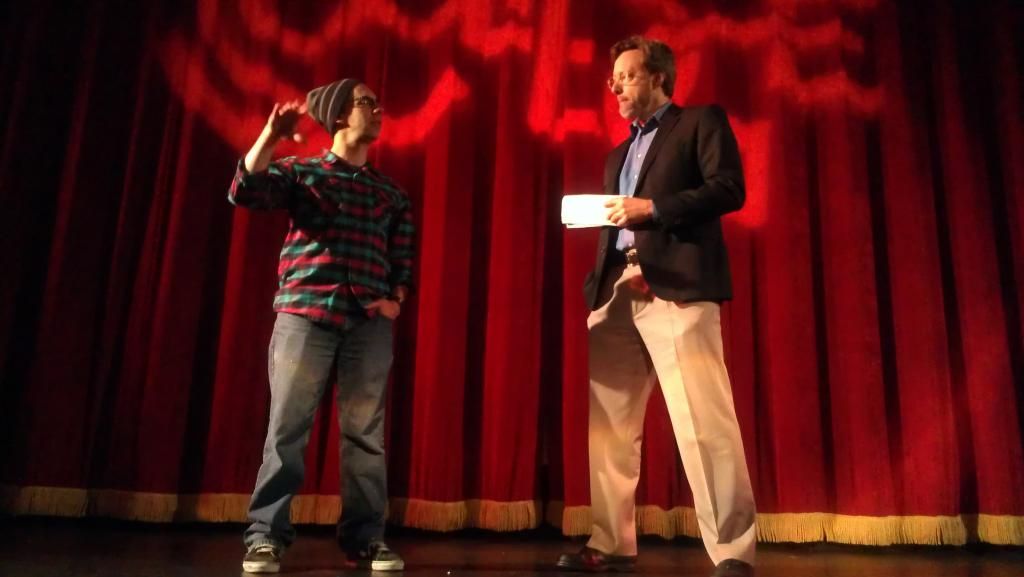
That's Waiting for Lightning writer Bret Anthony Johnston & Chicago Tribune critic Michael Phillips, who I think is the first out-of-town critic I can remember hosting one of these sessions. It was a fortuitous but somewhat ad-hoc situation, too - until just a day or two before the screening, it was Silver Linings Playbook scheduled for this slot until, well, it was no longer a preview, opening at Boston Common on Friday. It worked out, because Johnston happens to teach creative writing at Harvard and was able to join us for a Q&A rather than go skateboard himself that morning.
The position of a writer on a documentary is interesting; he mentioned that he wrote a profile of the film's subject - skateboarder Danny Way - for a magazine some years earlier, and described the job in this case as coming in after photography was mostly done in order to help shape the thing by taking the hundreds of hours of interview transcripts and piecing it together to tell a story. That makes sense, although that would be a completely backwards way to make a fictional film.
One point he returned to a couple of times was that Way is apparently one of the most articulate people on the subject of pain he's ever spoken to. At first I thought he was talking about emotional pain, but he actually meant literal, physical pain. It's kind of easy to nod half-seriously about that, seeing some of the falls he takes on a skateboard in this movie, but Johnston described him as being able to converse like a doctor on that subject despite only getting through his freshman year of high school and otherwise speaking like a dropout. And that's kind of interesting, since it implies not just familiarity, but an instinctive understanding of a specialized subject. It's probably a big part of why he's been able to rise to the top of his field and innovate there; being able to recognize what one's body is capable of handling has probably kept him from being scared off or Darwin-ing himself out of the game.
Waiting for Lightning
* * ¾ (out of four)
Seen 18 November 2012 in Coolidge Corner Theatre #1 (Talk Cinema, digital)
Most extreme sports movies sell spectacle; if one has been booked for a night or two at a local theater before hitting the shelves at the local ski/surf/skate shop, you can usually bet on quality photography of impressive feats in nice locations. Waiting for Lightning is different; although it's got a heck of a stunt at its center, it is primarily a biography of the man who attempted it and what got him there.
That man is Danny Way, a skateboarding prodigy from Vista, CA, who excelled at an unusually young age, dropping out of school and turning pro when he was fifteen. While he mastered street skating after the skate parks where he grew up in started closing down, those were clearly his first love, and he recreated those experiences on a grand scale with "Megaramp". As the movie opens in 2005, he's planning a record-setting Megaramp stunt - jumping the Great Wall of China.
Even a large-scale stunt like the China jump is over relatively quickly, so director Jacob Rosenberg and writer Bret Anthony Johnston spend some time building up to it. Some of that time is spent on the literal building, and it might have been interesting to take a somewhat closer look at that if the footage were available; what we see of American designers working with a Chinese crew on a structure that must be built quickly but within precise specifications would be the basis of a nifty "how things work" documentary. This might especially be the case for non-skaters who only see the fearlessness involved as opposed to the physics of the ramp and the skill involved.
Full review at EFC.
No comments:
Post a Comment